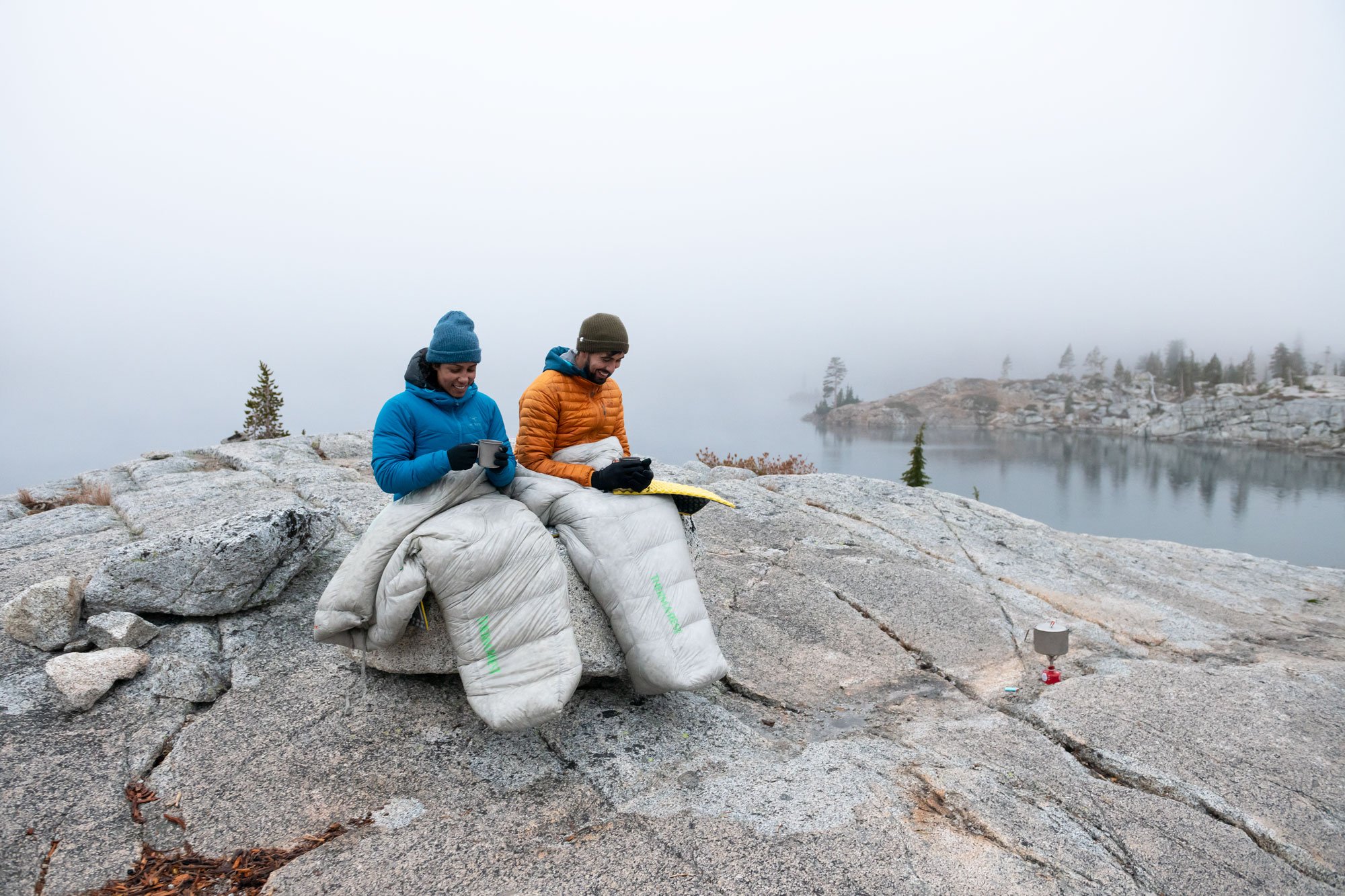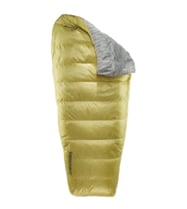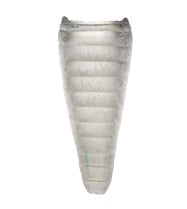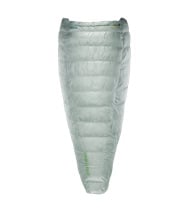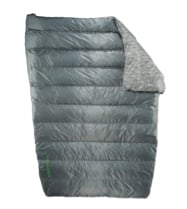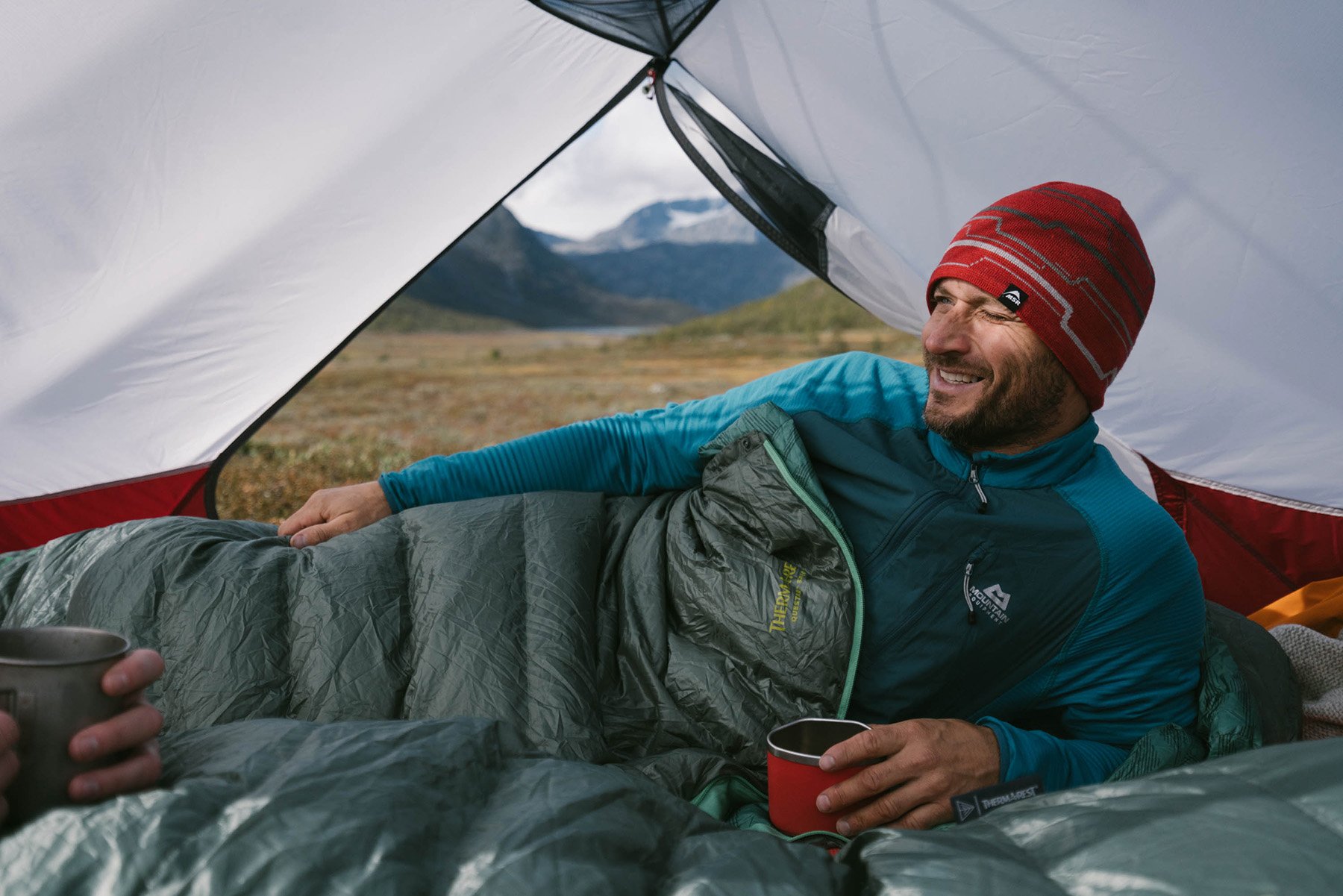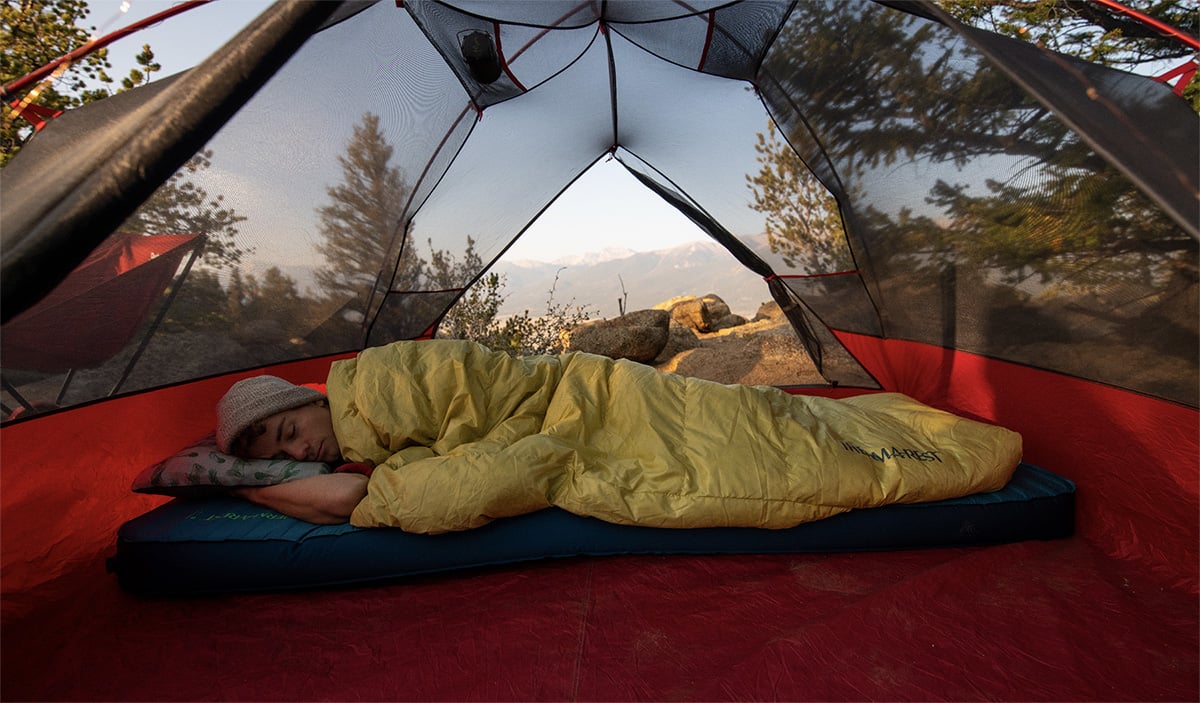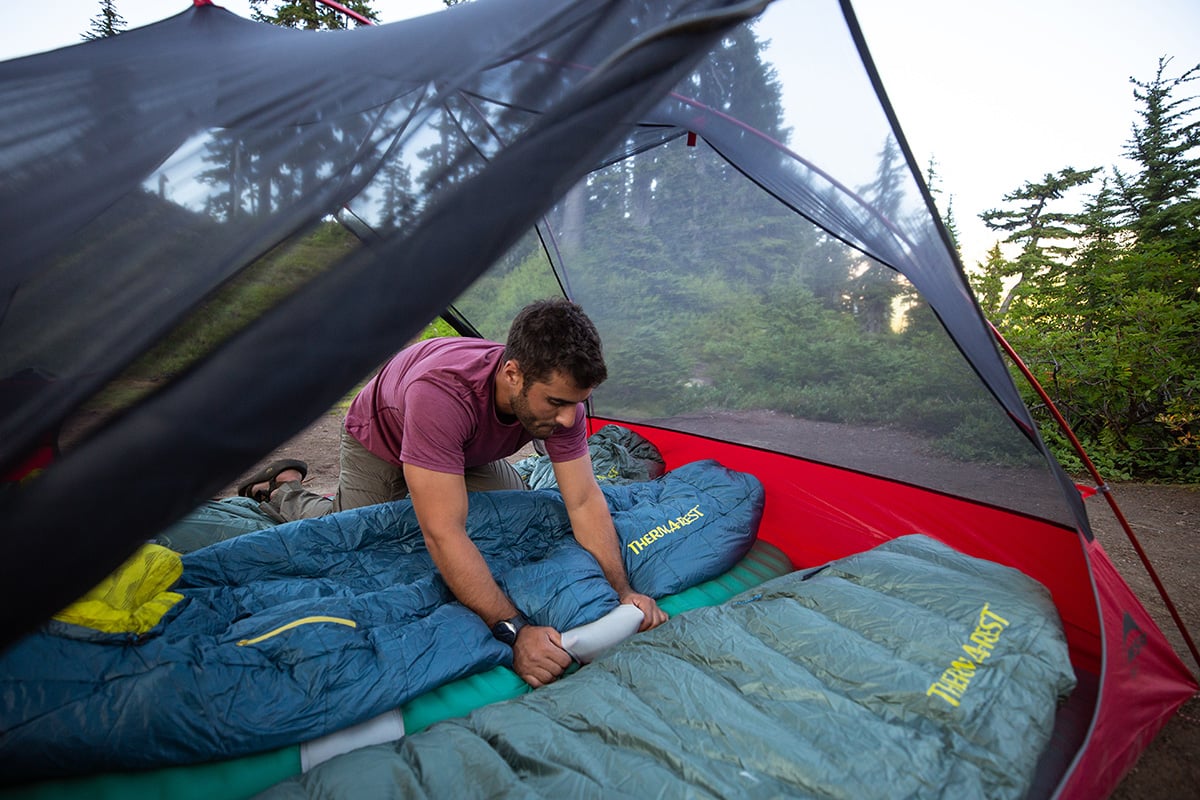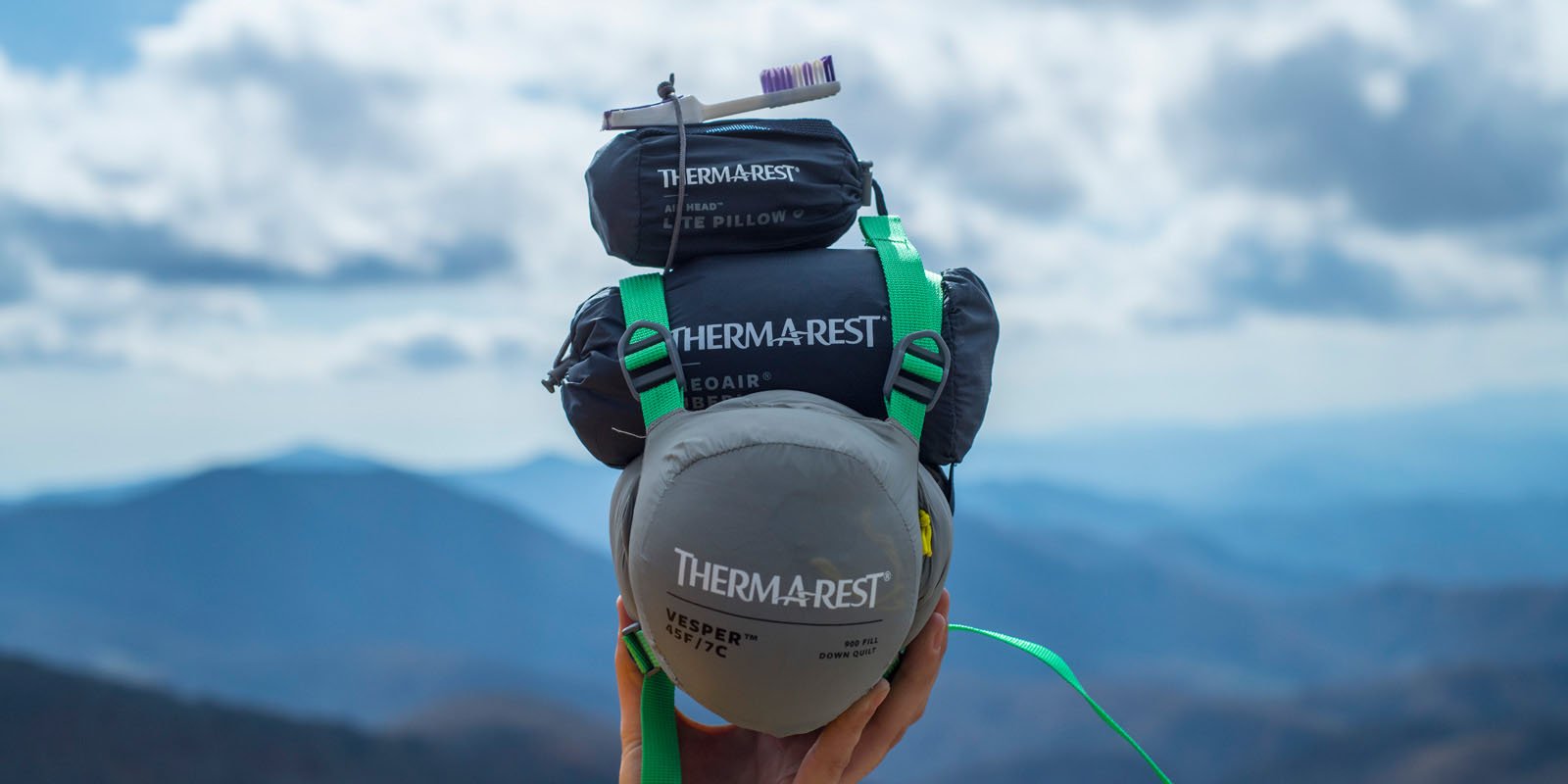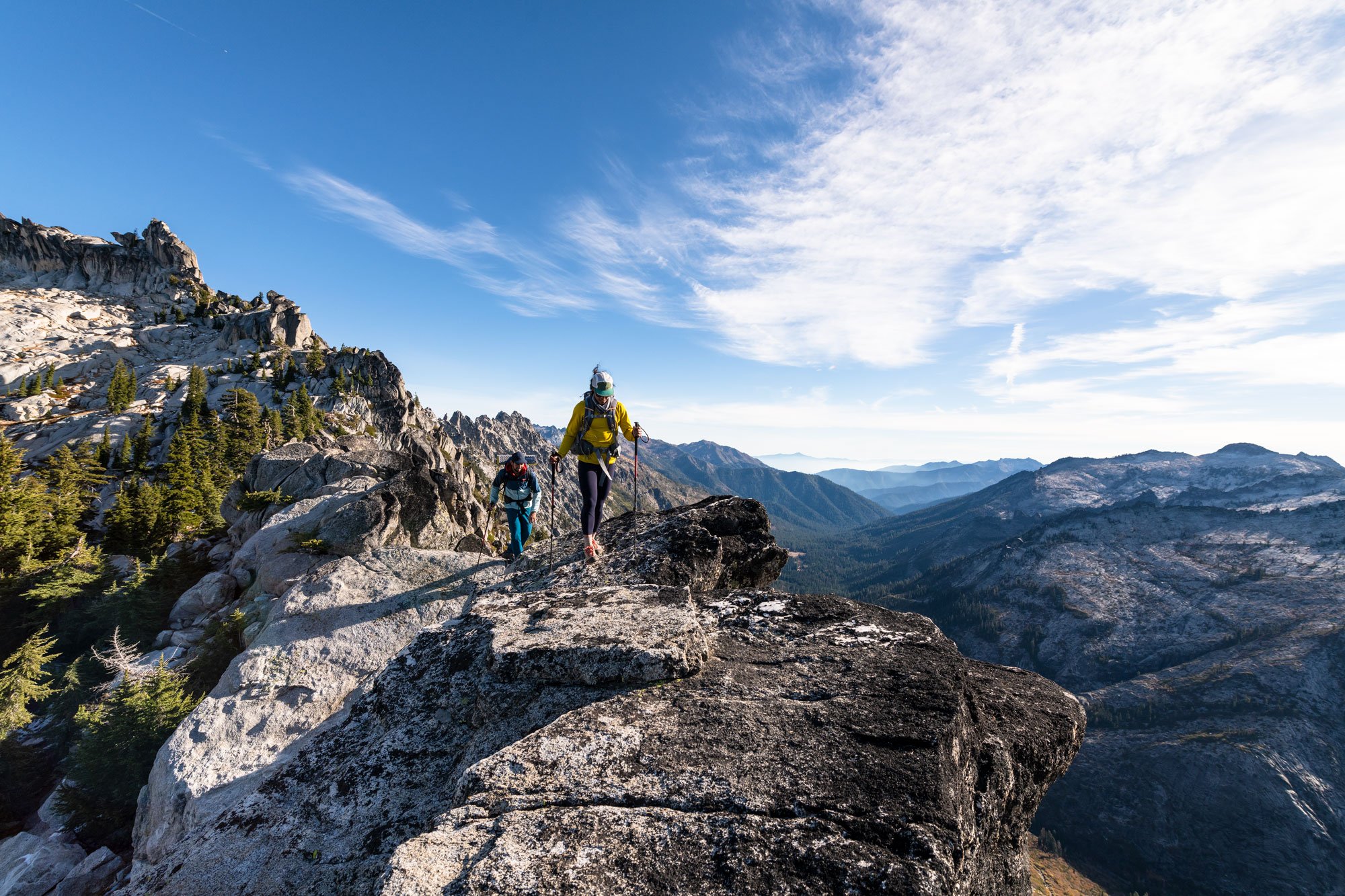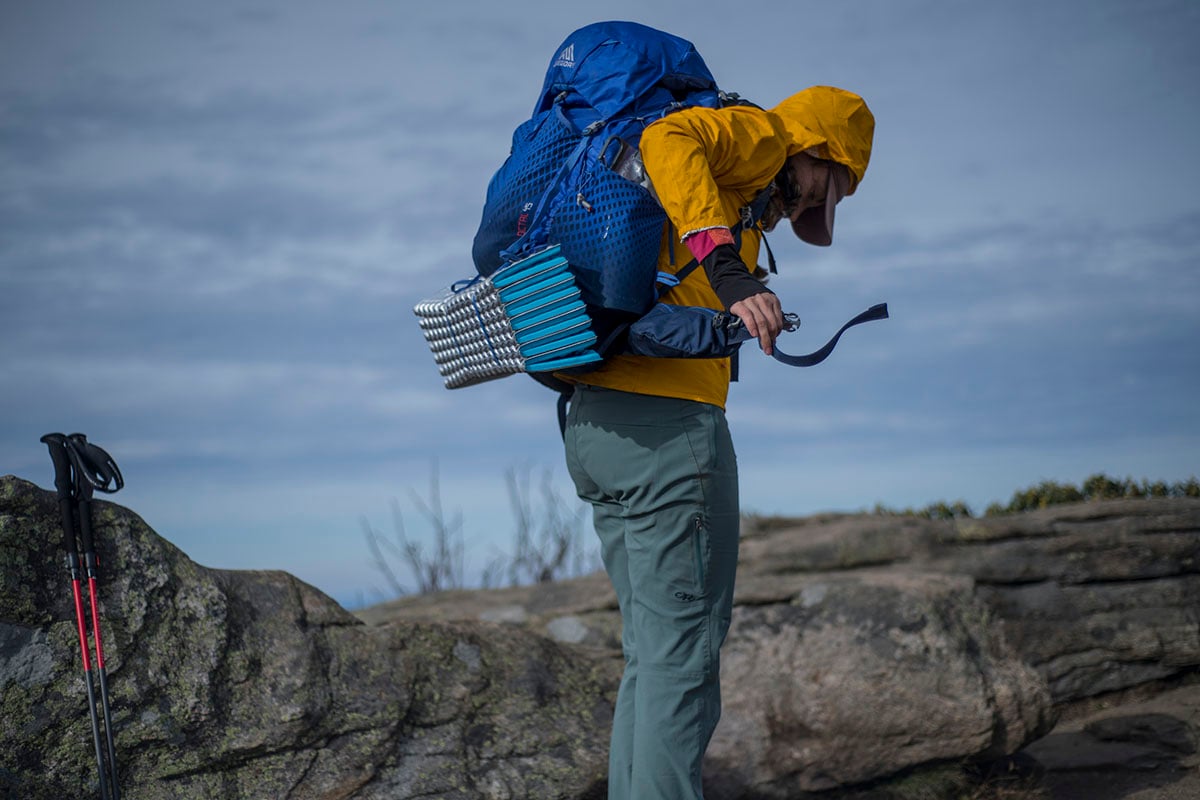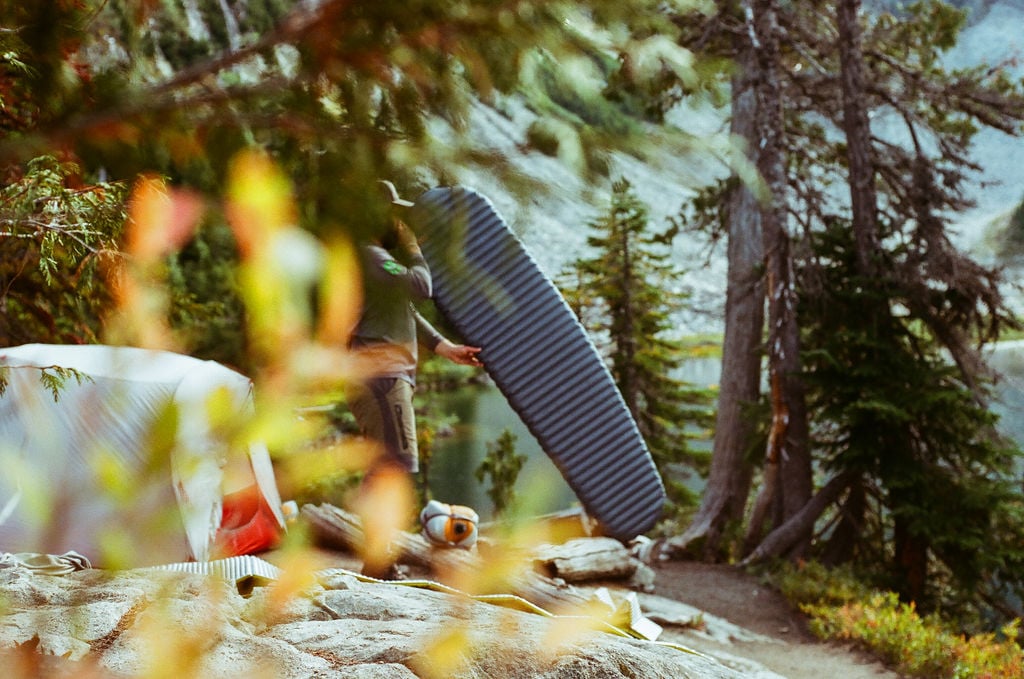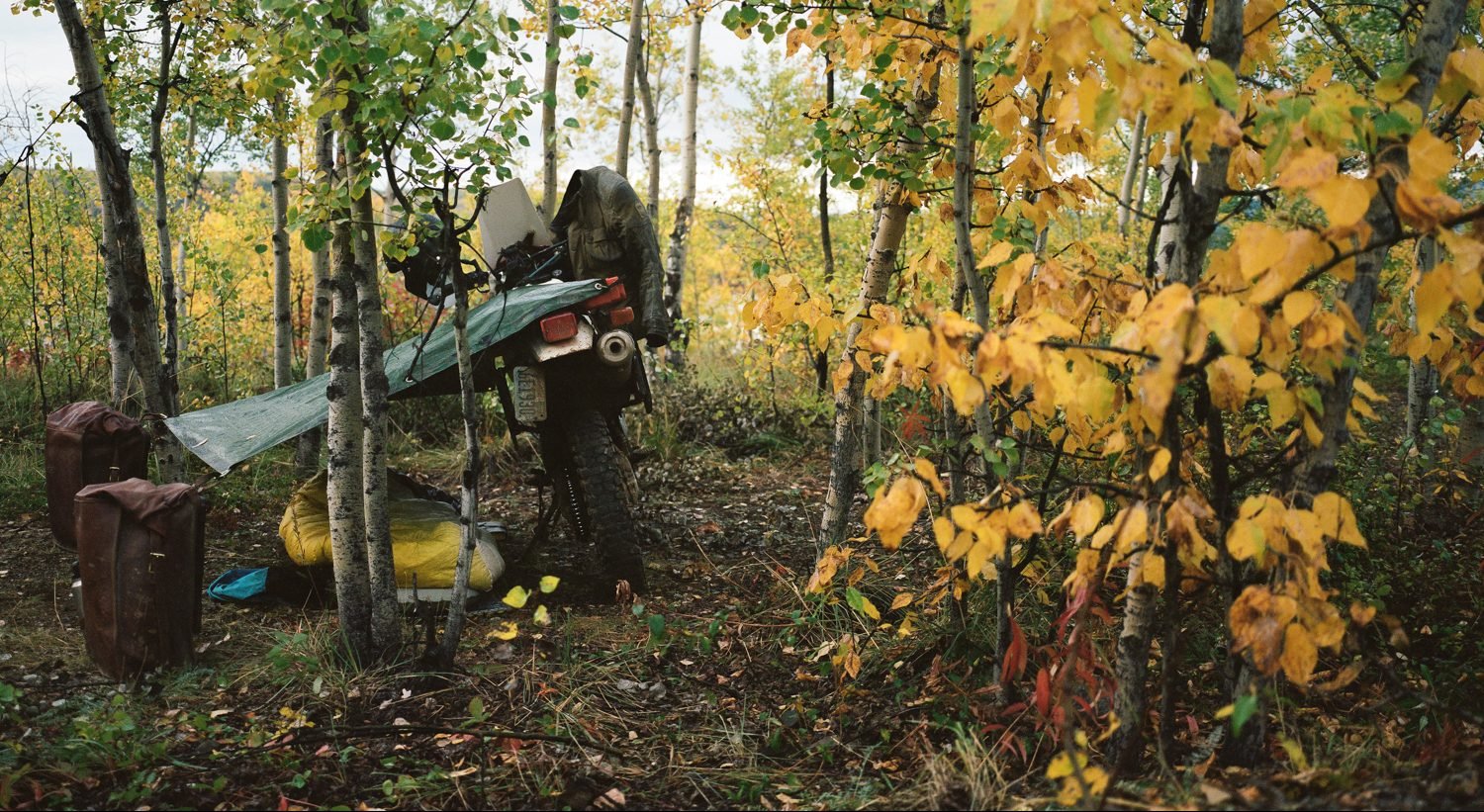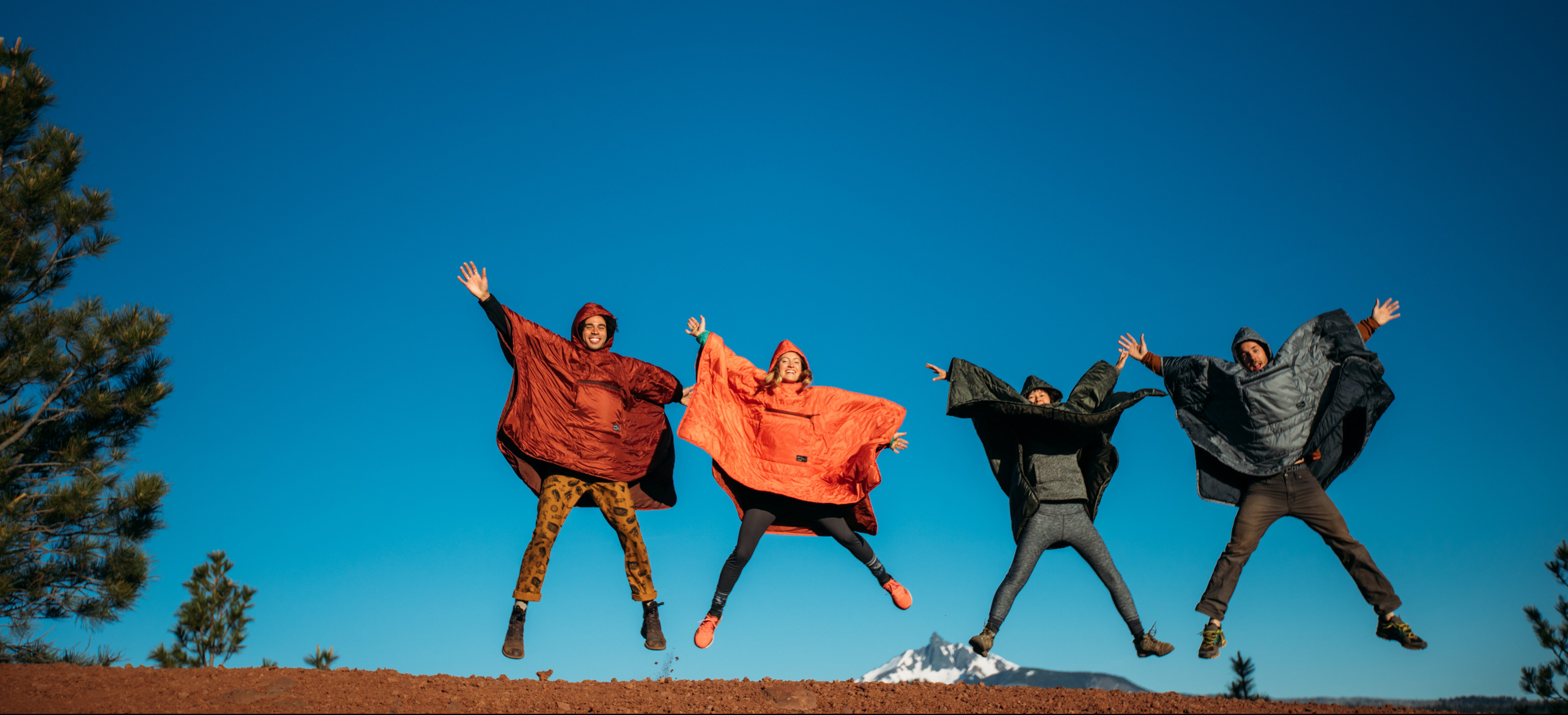If met with a fork in the road, which trail would you take? If someone presented you with a less popular choice, that you believed was better, would you take it? This was the fork I met when presented with the idea of using a backpacking quilt instead of a sleeping bag. I’ve been camping since I was a kid, everything from car camping to open bivvies deep in the backcountry, but always in a sleeping bag.
When I look at a backpacking quilt, my mind instantly floods with questions. Many of you probably have the same reaction after years of using sleeping bags. However, I confronted my hesitations, sought to answer my questions with experience and went backpacking with a quilt.
It was eye-opening.
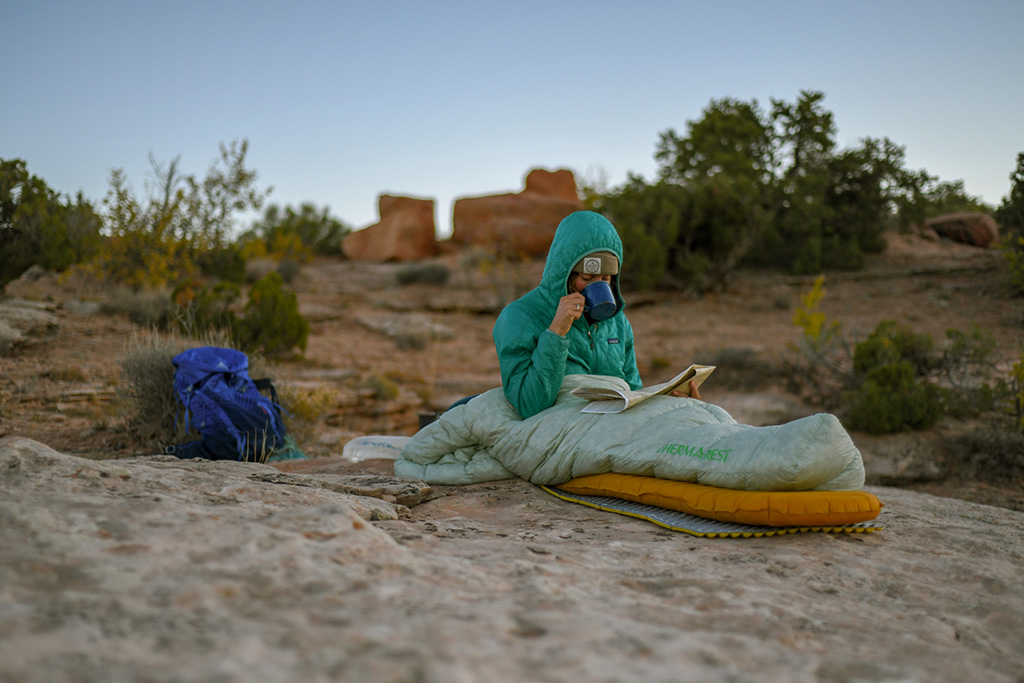
The Advantages of a Backpacking Quilt
Let’s start with the obvious benefits of an insulated quilt. Just by looking at a quilt and sleeping bag side by side, it’s pretty evident that the quilt is going to pack down smaller and weigh less than a traditional mummy bag. For a thru-hiker or alpinist, saving space and carrying a lighter pack are huge priorities. Even a weekend backpacker knows this leaves room for s’more supplies and less weight while hiking.
Comfort
From a comfort standpoint, a quilt offers the same qualities as your bed at home. You can sprawl your limbs every which way, unencumbered by a tight-fitting sleeping bag. By adjusting the ventilation, girth or just sticking your leg out of the quilt, you can easily manage the temperature of your sleep system far easier than with a zipped-up sleeping bag.
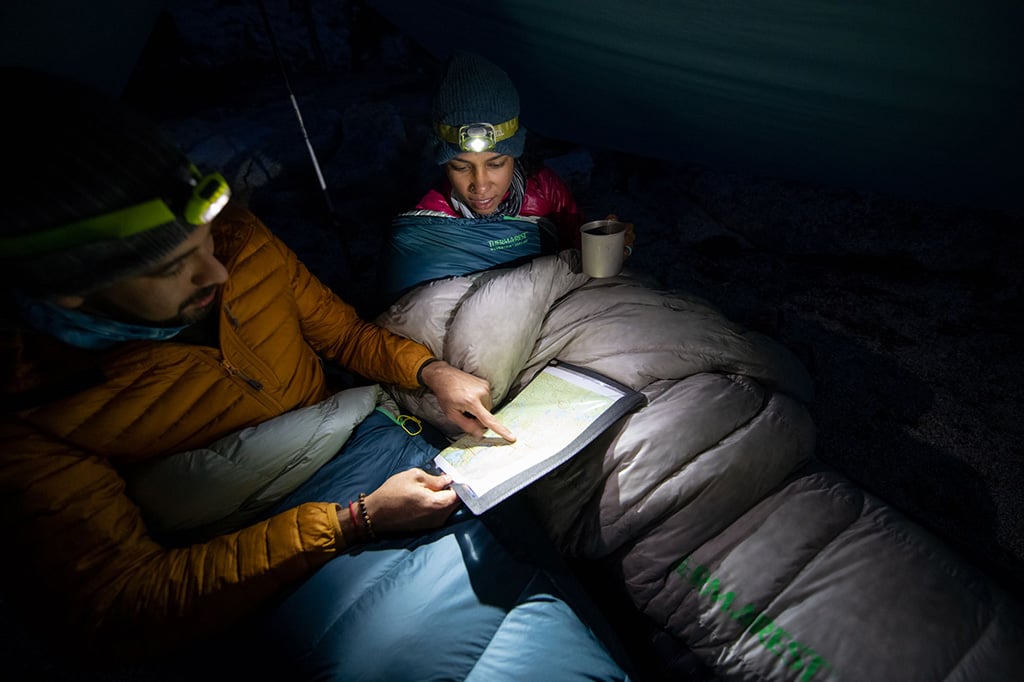
Warmth
The primary purpose of your camp insulation is to keep you warm in camp. This is usually the first thing that quilt skeptics will question and was my primary concern as well. Without the bottom of the bag, how was I supposed to stay insulated and retain heat?
Our first order of business is examining the efficiency of a sleeping bag’s bottom insulation. Down and synthetic fills deliver warmth with their ability to loft and create air pockets. When this fill is compressed, either by weight or moisture, then it begins to lose its thermal retention properties.
When you lay down for a night in camp, your body compresses the down between you and your pad. The insulation under you is predominantly provided by your sleeping pad, not your sleeping bag’s fill. If you turn in the night, the compressed insulation becomes a cold spot until the fill recovers its loft. This is not a problem for quilts (or Therm-a-Rest sleeping bags with SynergyLink Connectors) which allows you to move freely while your insulation stays in place.
All Therm-a-Rest quilts can be strapped directly to your pad to maximize heat retention by eliminating drafts. Since the quilts also lack a hood, you will want to bring along something to keep your head warm. A simple beanie will do.
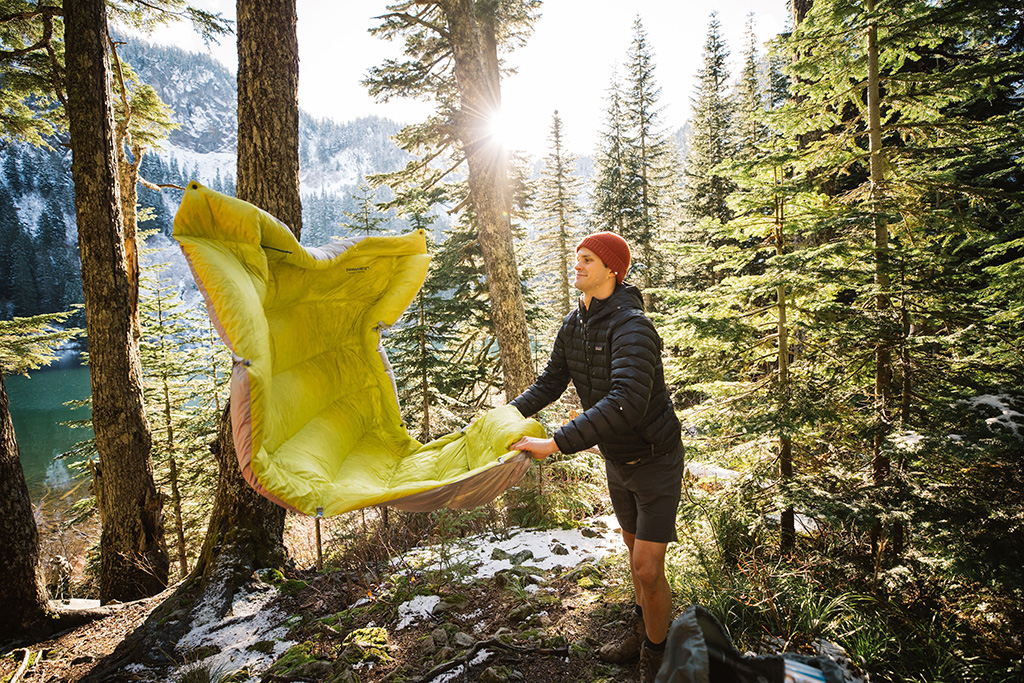
Breathability
Being cold at camp is pretty terrible, but overheating the entire night can be just as bad. Resting at camp is not just about catching some Z’s, it’s about recovering and gaining energy for tomorrow’s adventure.
When your body overheats, it immediately starts taking steps to cool down by sweating. The problem is that once your body is done sweating, the moisture remains and can quickly chill in colder weather. This chilled moisture can cause you to shiver, contracting your muscles as you attempt to warm back up, possibly overheating again. This vicious cycle can sap you of your energy, leaving you drained for the big day that you had planned.
To make sure this doesn’t happen to you, the fill used in Therm-a-Rest quilts, Nikwax® Hydrophobic Down, is an excellent heat regulator. Your quilt can be easily ventilated by folding the top down, loosening the side baffles, or kicking a foot or arm outside the quilt to create a draft.
Versatility
If you still aren’t sold on the idea, then the versatility of this piece should have you seriously thinking of making a quilt purchase. Adding a backpacking quilt to your sleep system quiver expands your options for camping year-round. In the summer, you can use the quilt on its own for a lightweight piece of insulation. When the days get shorter and the nights get colder, combine your quilt with a sleeping bag for a warmer night outside. These layering options immediately expand the conditions that your gear closet can handle.
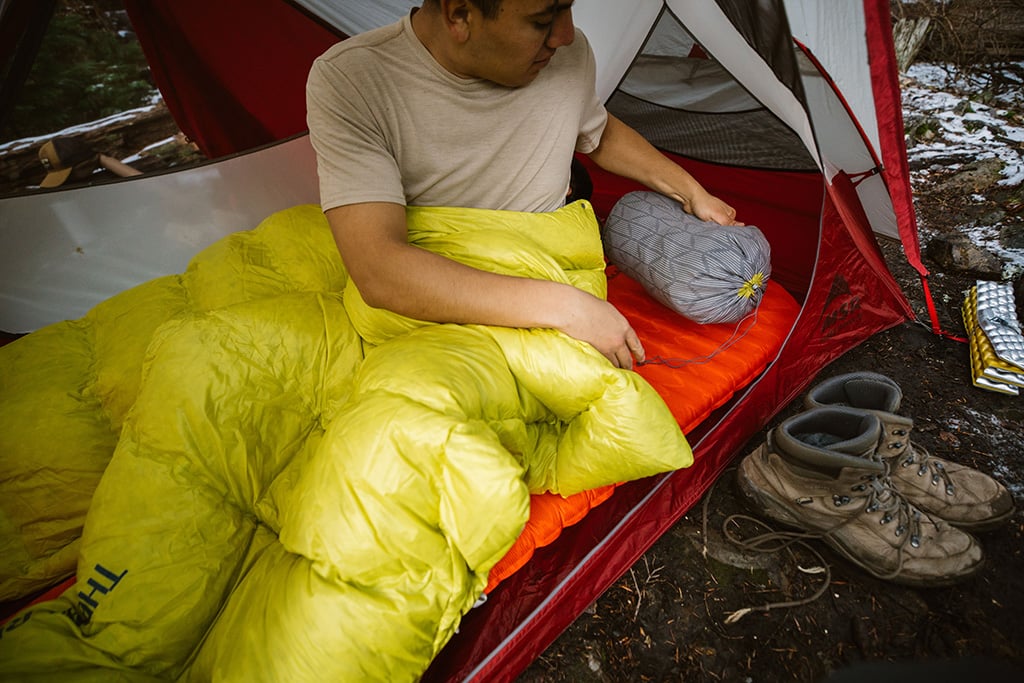
Designed for Pairing
One thing to examine before backpacking with a quilt is the R-value of your mattress. R-value is a measure of thermal resistance, which means the higher R-value pads will keep you warmer. As a rule of thumb, we recommend an R-value of 1.5 or more for any reliable warmth and an R-value greater than 4.0 for camping in the winter. Pairing your quilt with the correct R-value will help keep you comfy at camp.
The outdoor experience is, in many ways, supposed to be uncomfortable. We are taking ourselves out of civilization’s comforts and exposing ourselves to the elements and forces of nature, often while pushing our physical limits. However, the security of a camp gives us a reprieve from these forces after a hard day. We sleep soundly after a night around the campfire, listening to the sweet soundscape of the backcountry.
Camping with a Therm-a-Rest quilt affords you a lighter pack to push further and protection to sleep deeper. So the next time you are packing for your trip, consider taking the trail less traveled. I know I will. And I fully expect that it will make all the difference.
Related Posts:
- Camping with a Quilt – 5 Myths Debunked
- Understanding the Underestimated Camp Quilt
- The Ultimate Guide to Sleeping Bags & Quilts
Updated. Originally Published October 21, 2019.
